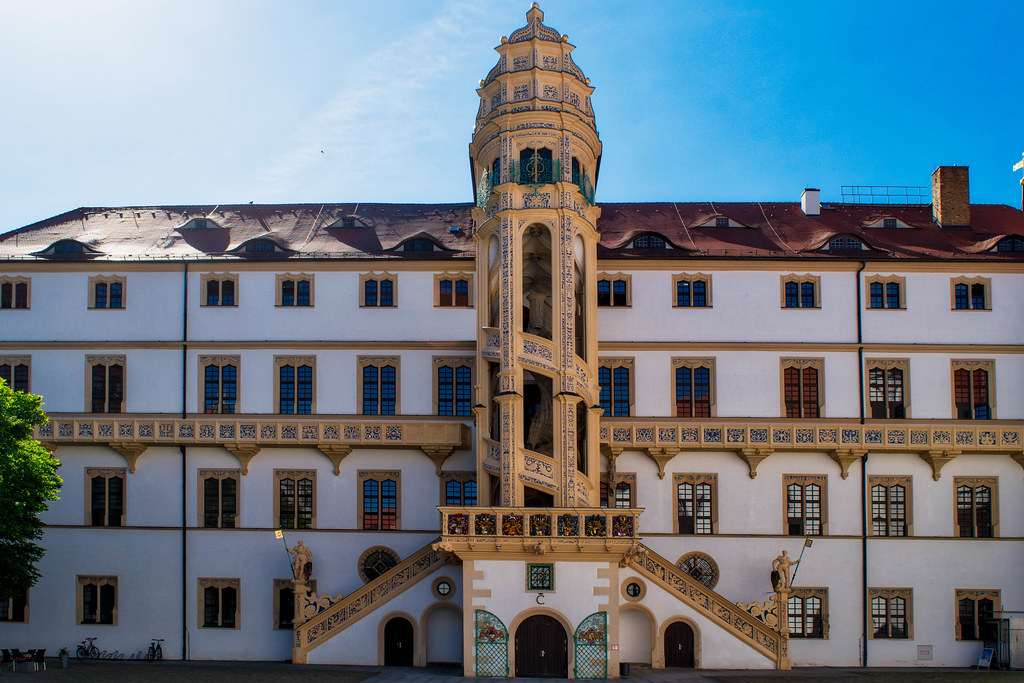Martin Luther sites
In 2017 it has been 500 years since Martin Luther nailed his 95 theses to the door of the Castle Church in Wittenberg. Although there is no historical proof of this happening, it was an event that changed the world by starting the Reformation. Here are listed the most significant sites of Luther's life.

Wartburg Castle
Wartburg castle, overlooking the town of Eisenach, is a UNESCO World Heritage Site. It was the home of St. Elisabeth of Hungary, the place where Martin Luther translated the New Testament of the Bible into German and the site of the Wartburg festival of 1817. It was an important inspiration for Ludwig II when he decided to build Neuschwanstein Castle.
Read more about Wartburg Castle
Veste Coburg
The Veste Coburg is one of Germany's largest castles. The hill on which the fortress stands was inhabited from the Neolithic to the early Middle Ages according to the results of excavations. The first documentary mention of Coburg occurs in 1056, in a gift by Richeza of Lotharingia.
Read more about Veste Coburg

Schlosskirche
All Saints' Church, commonly referred to as Schlosskirche (Castle Church) is the site where the Ninety-five Theses were likely posted by Martin Luther in 1517, the act that has been called the start of the Protestant Reformation.
Read more about Schlosskirche
Hartenfels Castle
The early Renaissance Hartenfels castle dominates the town of Torgau. It is the residence of the Saxon electors and the political and administrative centre. The castle chapel was designed especially for Protestant worship services and was consecrated by Martin Luther himself. History The fortification already stood on the banks of the Elbe during the Slavic period.
Read more about Hartenfels Castle
Melanchthonhaus
The Melanchthonhaus is a writer"s house museum in the German town of Lutherstadt Wittenberg. It is a Renaissance building with late Gothic arched windows and the broad-tiered gables.
Read more about Melanchthonhaus
St. Augustine's Monastery
The church and monastery of the Augustinian hermits in Erfurt was built around 1300. Martin Luther, the famous Augustinian monk, was admitted to the monastery on 17 July 1505. The Augustinian Monastery pays tribute to Martin Luther with a new exhibition. The Lutherzelle (Luther's cell) can be visited as part of the exhibition.
Read more about St. Augustine's Monastery
Lutherhaus
The Lutherhaus is a writer's house museum in Lutherstadt Wittenberg. Originally built 1504 as part of the University of Wittenberg, the building was the home of Martin Luther for most of his adult life and a significant location in the history of the Protestant Reformation.
Read more about Lutherhaus
Martin Luther's Death House
Martin Luther"s Death House (Martin Luthers Sterbehaus) is the historic building in Eisleben, where it was incorrectly thought that Martin Luther died on 18 February 1546. Since then it has become a museum and a UNESCO world heritage site.
Read more about Martin Luther's Death House
Martin Luther's Birth House
Martin Luther"s Birth House (Martin Luthers Geburtshaus) is a museum in Eisleben, Germany. The actual house in which Luther was born no longer exists, it having been burnt completely to the ground in 1689. The German religious reformer Martin Luther was born there in 1483.
Read more about Martin Luther's Birth House